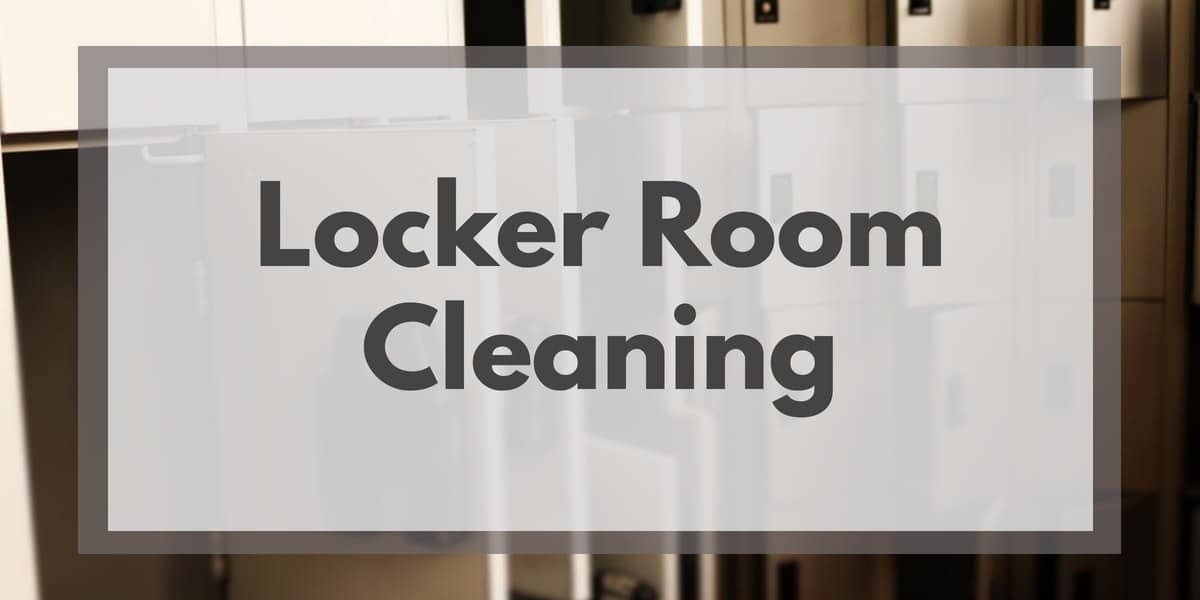From where you stand or sit, to the places you wash up, and everything in between--locker rooms are covered in illness-causing germs and bacteria which must be cleaned in a specialized manner to ensure safe use and occupant health.

How Dirty is Your Locker Room?
School and fitness center locker rooms are notoriously covered in enough germs and bacteria to give anyone pause, but just how bad is it?
When prospective fitness club members tour new facilities, one of the last and traditionally least exciting stops is the locker room.
By contrast, for cunning and mal-intentioned pathogens like fungi and bacteria, the dank environment of the locker room makes it a premier destination spot.
Fungal infections, like athlete's foot, have long been associated with humid locker rooms.
Now the bacterium methicillin-resistant staphylococcus aureus, or MRSA, which was once thought confined to hospitals and prisons, has been making its way into some athletic facilities.
According to a study conducted by FitRated, who tested multiple surfaces for bacteria colony forming units (CFUs) on common touch points throughout multiple locker rooms:
- Sink faucet handles contained an average of 545,312 CFUs, with one testing as high as seven million CFUs.
- Shower handles contained an average of 153,279 CFUs.
- Benches tested positive for an average of 8,241 CFUs.
That's quite a bit, considering the average toilet seat in the home contains as little as 50 CFUs.
More troubling were the types of bacteria found, which included:
- Gram-negative rods - Almost all gram-negative rods are dangerous to humans--many are antibacterial and antibiotic resistant--and can cause pneumonia and meningitis.
- Bacillus - Commonly found in soil and typically associated with food poisoning, and;
- Gram-positive cocci - Frequently cause skin infections, pneumonia, and septicemia.
Source:
How to Clean a Locker Room
Cleaning locker rooms requires a specialized approach and products to ensure that germs and bacteria are effectively killed or removed.
Additionally, every locker room is different, so special planning must take place before cleaning and disinfecting to avoid cross-contamination.
- Remove all entry and walkway mats and have them professionally serviced.
- Clean from the least dirty to the filthiest areas of the locker room to remove all dirt, soil, and oils.
- Use an EPA-certified or hospital-grade disinfectant to kill all the germs and bacteria, making sure to observe recommended lay times and ventilation requirements.
- Supplement the standard cleaning and disinfection cycle with enzyme-based cleaning products to remove protein-based smells commonly attributed to locker rooms.
- Wipe down all germ hot spots and high contact surfaces regularly.
- Use an electrostatic disinfection appliance to simplify cleanup and ensure total surface coverage and bacteria removal.
- Maintain the cleaning schedule in accordance with occupancy and use, meaning the more traffic in and out of the locker room, the dirtier it is, and the more often it must be cleaned.
Occupant Safety Recommendations
Despite the apparent dangers of using a locker room, everyone can take steps to ensure their personal safety, as well as the health and safety of everyone around them.
- Make sure to wear clean clothing and to launder gym clothes after use--do not leave soiled clothing in the locker or gym bags to sit.
- Bring your own hygiene items and shower after working out.
- Always wear shower shoes when walking around the locker room, in the restroom, or in the showers--never go barefoot.
- Wash your hands before and after using gym equipment or using the restroom.
References & Resources
- CDC - BAM, Your Body, Lurking in the Locker Room
- Five Keys To Proactive Locker Room Cleaning
- Locker Room Hygiene
Takeaway
Locker rooms, especially those located in schools or frequented by student-athletes, pose a significant health risk to the community at large, especially within the framework of how superbugs are currently spreading throughout our communities.
Children and young adults do not possess immune systems on par with adults and are more susceptible to infections caused by bacteria which would not affect most healthy adults.
Additionally, the facilities are unsafe for those possessing previously compromised immune systems due to certain life-long diseases--chrons disease being a recent and tragic example.
To ensure the health and safety of your locker room facilities and its occupants, a dedicated team of custodians possessing the proper tools, training, and experience is required.
Outsourcing your locker room cleaning services is the single best method for ensuring this happens routinely, on time, and on budget, without incident.
Contact us today and discover why Vanguard Cleaning Systems® is the Standard of Clean® for businesses throughout Northwest Arkansas, Missouri, and Oklahoma.
In Oklahoma, dial 918-960-4450
In Arkansas, dial 479-717-2410
In Missouri, dial 417-812-9777


